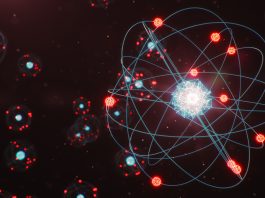A research team has successfully created efficient and high-speed spintronic devices to look at spin dynamics inside rare earth materials, using a tabletop ultrafast soft-X-ray microscope.
Sharing real-time information requires a complex network of systems. A favourable approach for speeding up data storage devices consists of switching the magnetisation, or the electrons’ spin, of magnetic materials with ultra-short femtosecond laser pulses. However, what currently remains unclear is how the spin evolves in the nanoworld on extremely short time scales, in one-millionth of one-billionth of a second.
The research team, led by Professor François Légaré at the National Institute for Scientific Research (INRS), in collaboration with international partners, has made a major breakthrough in this field. The group’s findings were published in the journal Optica.
Producing high-speed spintronic devices
So far, studies on the subject strongly rely on limited-access large X-ray facilities such as free-electron lasers and synchrotrons. For the first time, the research team demonstrates a tabletop ultrafast soft X-ray microscope to spatio-temporally resolve the spin dynamics inside rare earth materials, which are promising for high-speed spintronic devices.
This new soft X-ray source, which is based on a high-energy Ytterbium laser, represents a critical advance for studying future energy-efficient and high-speed spintronic devices.
“Our approach provides a robust, cost-efficient, and energy-scalable elegant solution for many laboratories. It allows the study of ultrafast dynamics in nanoscale and mesoscale structures with both nanometre spatial and femtosecond temporal resolutions, as well as with the element specificity,” explained Professor Andrius Baltuska, at TU Wien.
Bright X-ray pulses to observe the spin
With this bright source of X-ray photons, a series of images of the nanoscale rare earth magnetic structures have been recorded. They clearly expose the fast demagnetisation process, and the results provide rich information on the magnetic properties that are as accurate as those obtained using large-scale X-ray facilities.
“Development of ultrafast tabletop X-ray sources is exciting for cutting-edge technological applications and modern fields of science. We are excited about our results, that could be helpful for future research for spintronics, as well as other potential fields,” explained Dr Guangyu Fan, an INRS Postdoctoral Researcher.
“Rare earth systems are trending in the community because of their nanometre size, faster speed, and topologically protected stability. The X-ray source is very attractive for many studies on future spintronic devices composed of rare earth,” commented Nicolas Jaouen, Senior Scientist at the French National Synchrotron Facility.
Professor Légaré emphasises the importance of the collaborative work between experts in the development of state-of-the-art light sources and ultrafast dynamics in magnetic materials at the nanoscale.
“Considering the quick emergence of high-power Ytterbium laser technology, this work represents huge potential for high-performance soft X-ray sources. This new generation of lasers, which will be available soon at the Advanced Laser Light Source (ALLS), will have many future applications for the fields of physics, chemistry, and even biology,” Légaré concluded.









